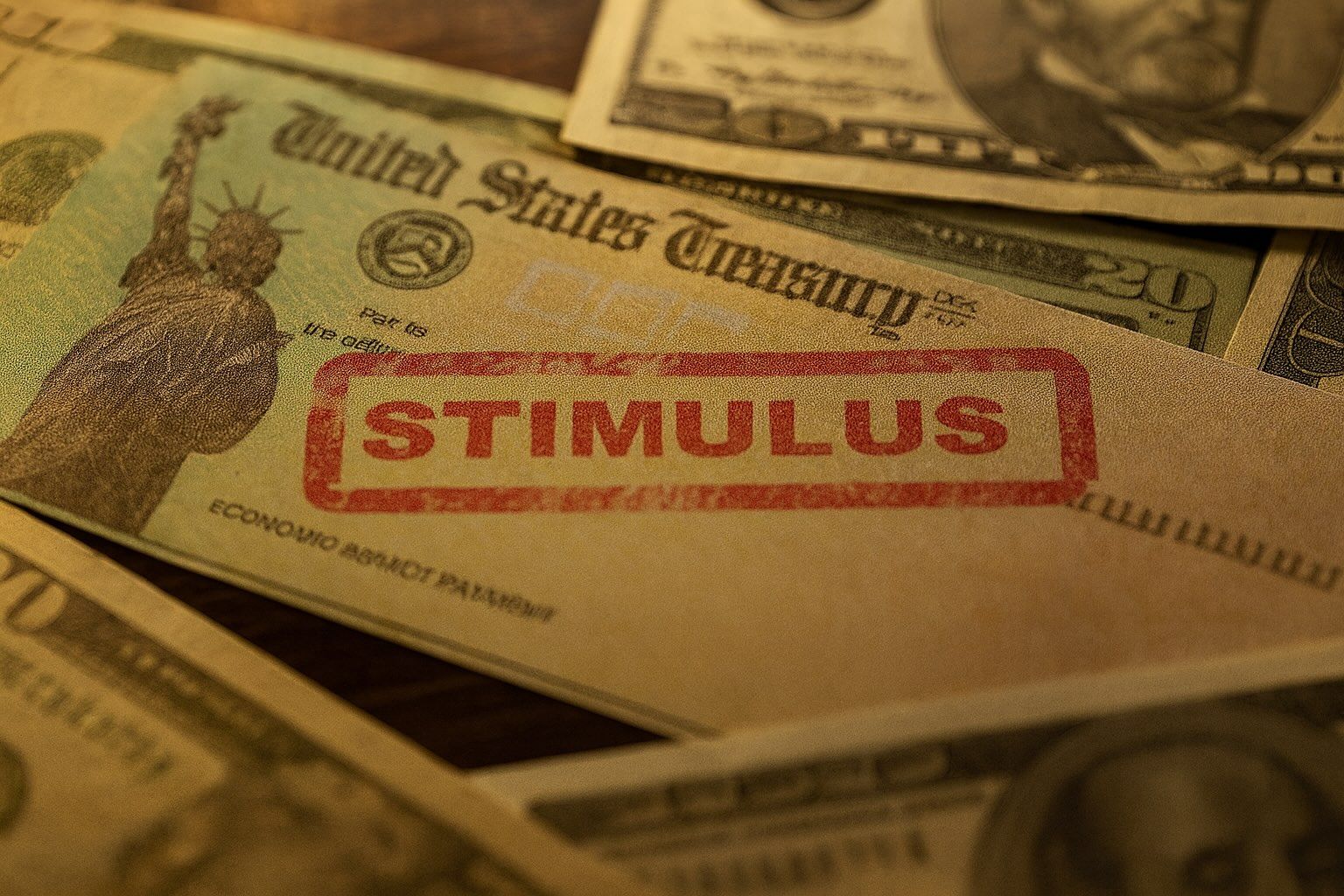- No New Federal Checks: Despite social-media hype, no new stimulus checks have been authorized for 2025. Congress passed no further “COVID relief” bills, and the IRS has flatly confirmed, “Taxpayers will not receive new stimulus checks of any amount this summer” [1] [2].
- Rumors Proven False: Viral posts claiming a $1,390, $1,702 or even $2,000 IRS payment in October 2025 are baseless. The IRS and Treasury say these claims are bogus. In fact, the IRS explicitly warns “there are no new stimulus checks on the way,” and no official website or legislation supports such payments [3] [4].
- Past Stimulus Recap: The U.S. delivered three federal stimulus checks during 2020–2021 (up to $1,200, $600 and $1,400 per person). The last window to claim those payments (via the 2021 tax return Recovery Rebate Credit) closed on April 15, 2025 [5] [6]. Any unclaimed funds have now reverted to the Treasury.
- Proposals Not Policy: Recent ideas like Sen. Josh Hawley’s tariff-rebate bill or President Trump’s proposed “DOGE dividend” ($5,000 checks funded by tariff savings) remain proposals only. None have passed Congress. Independent analysts note that, even if enacted, the funding (tariff revenue or the Trump “Department of Government Efficiency” savings) falls far short of the sums needed for $5,000 checks [7] [8].
- State Relief ≠ Stimulus: A few states have issued their own one-time “inflation relief” or rebate payments (for example, New York mailed up to $200–$400 checks, and Pennsylvania, Georgia and Colorado sent modest tax rebates) [9] [10]. However, those are state programs (often to offset gas or property-tax inflation) and not new federal stimulus checks.
- Beware Scams: Fact-checkers and the IRS warn that soliciting emails or posts about new stimulus money are often scams or clickbait. Crooks hope to steal personal data by dangling fake checks. Always verify with official sources (IRS.gov, Treasury.gov) or use the IRS Where’s My Refund tool [11] [12].
Rumors vs. Reality
In September 2025, social media erupted with posts claiming the IRS would deposit a fresh stimulus payment (often citing figures like $2,000 or $1,702) into Americans’ accounts in October. These rumors linked the checks to ideas like a proposed tariff rebate or a so-called “DOGE dividend.” In truth, nothing of the sort is happening. As the Hindustan Times reports, “The IRS will not send any stimulus check in October 2025” [13]. Similarly, Fox News fact-checker Austin Williams quoted an IRS spokesperson: “The IRS says there are no new stimulus checks on the way” [14]. The Associated Press also confirms “Taxpayers will not receive new stimulus checks of any amount this summer,” quoting an IRS official [15]. In short, neither Congress nor the IRS has green-lit any new federal payments for 2025.
How Federal Stimulus Works
By law, economic impact payments (“stimulus checks”) must be authorized by Congress. During the COVID-19 era, Congress passed three relief bills (CARES Act, Consolidated Appropriations Act 2021, and the American Rescue Plan). Those laws provided: up to $1,200 in spring 2020, $600 in December 2020, and $1,400 in early 2021 [16]. No comparable legislation has been enacted since. Without a new bill, the Treasury and IRS have no authority to issue free checks. In fact, the IRS notes that any unused stimulus money is now effectively gone: taxpayers had until April 15, 2025 to claim the final $1,400 Recovery Rebate Credit; after that deadline, “any unclaimed stimulus money officially reverted back to the US Treasury” [17].
Proposals and Politics
Lawmakers have floated ideas for more relief, but none are law. Senator Josh Hawley (R-Missouri) proposed the American Worker Rebate Act, planning to send rebate checks (around $600 per person, up to $2,400 per household) funded by Trump-era tariffs [18] [19]. Hawley declared that “Americans deserve a tax rebate” from those tariffs [20]. But as AP and Economic Times note, Hawley’s bill “has not passed the Senate or the House” [21].
Former President Trump also mentioned ideas like a $5,000 “DOGE dividend” (using savings from his touted “Department of Government Efficiency”). However, analysts flag these as impractical talking points. Kiplinger explains that the touted “$2 trillion in savings” hasn’t materialized – DOGE’s actual $130 billion in claimed savings translates to only about $807 per taxpayer, nowhere near the $5,000 promised [22]. With a large budget deficit, Treasury would have to borrow even to attempt such payouts. In sum, experts say these ideas are speculative. As one fact-check puts it, these remain “just legislation” or “political concepts” rather than real policy [23] [24].
State Rebate Checks
While federal stimulus is off the table, some states have sent their own one-time rebates to ease inflation pressures. For example, New York mailed eligible residents $150–$400 checks (based on 2023 income) [25]. Georgia approved $250–$500 tax rebates (depending on filing status) using its budget surplus [26]. Pennsylvania and Colorado have also issued refunds or property-tax credits for 2024 [27]. However, these are state programs tied to local budgets and laws – not new federal stimulus. In Florida, for instance, there is currently no state-issued cash check in fall 2025 (unlike Georgia’s refunds), despite some talk of tax breaks for homeowners [28] [29].
Avoiding Scams
Authorities stress that official updates only come from IRS or Treasury websites and reputable news outlets. Fraudsters often hijack the “stimulus” topic to phish for data. As FingerLakes1 news advises, ignore unsolicited messages promising IRS checks, and don’t click dubious links. Stick to IRS.gov: use tools like “Where’s My Refund” to track your legitimate tax refund, and report any IRS impersonation to the Treasury Inspector General [30] [31]. In short, if it sounds too good to be true (like a sudden free check for all), it almost certainly is.
Bottom Line: As of fall 2025, no new federal stimulus checks have been approved. Any talk of surprise IRS payments is rumor or misinformation. The best way to stay informed is to watch official channels: the IRS will post updates on its website or via press releases if anything changes [32] [33].
Sources: Official news and fact-checks from AP, IRS releases, and media outlets [34] [35] [36] [37] [38] (see in-text citations).
References
1. apnews.com, 2. www.hindustantimes.com, 3. www.hindustantimes.com, 4. ts2.tech, 5. economictimes.indiatimes.com, 6. economictimes.indiatimes.com, 7. apnews.com, 8. www.kiplinger.com, 9. economictimes.indiatimes.com, 10. www.fingerlakes1.com, 11. www.fingerlakes1.com, 12. ts2.tech, 13. www.hindustantimes.com, 14. www.fox32chicago.com, 15. apnews.com, 16. economictimes.indiatimes.com, 17. economictimes.indiatimes.com, 18. apnews.com, 19. apnews.com, 20. apnews.com, 21. apnews.com, 22. www.kiplinger.com, 23. ts2.tech, 24. www.kiplinger.com, 25. economictimes.indiatimes.com, 26. www.kiplinger.com, 27. economictimes.indiatimes.com, 28. www.kiplinger.com, 29. www.kiplinger.com, 30. www.fingerlakes1.com, 31. ts2.tech, 32. www.hindustantimes.com, 33. apnews.com, 34. apnews.com, 35. www.hindustantimes.com, 36. www.fingerlakes1.com, 37. www.kiplinger.com, 38. economictimes.indiatimes.com








